#Catherine of Siena
Text
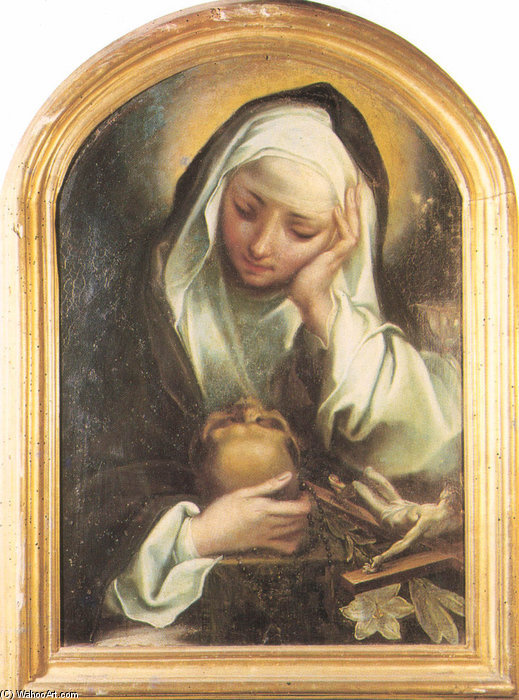
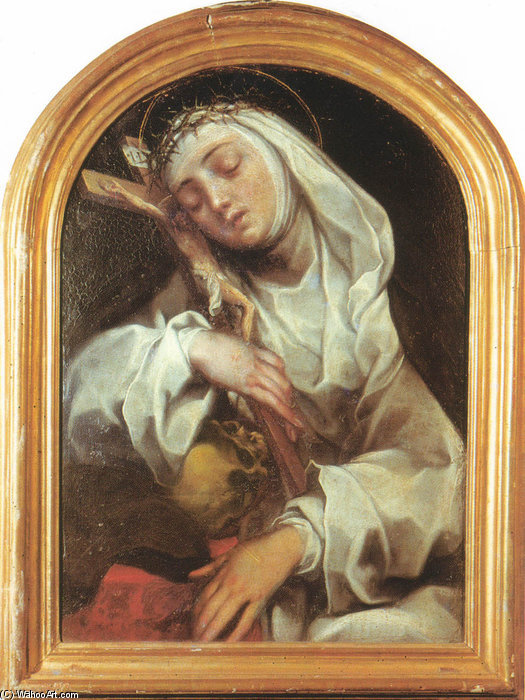
Saint Catherine of Siena by Francesco Vanni (1563 - 1610)
#art#art history#female saints#saints#catholiscism#francesco vanni#16th century art#saint catherine of siena#catherine of siena#memento mori#christianity#christian art#martyrs#martyr#my posts
3K notes
·
View notes
Text
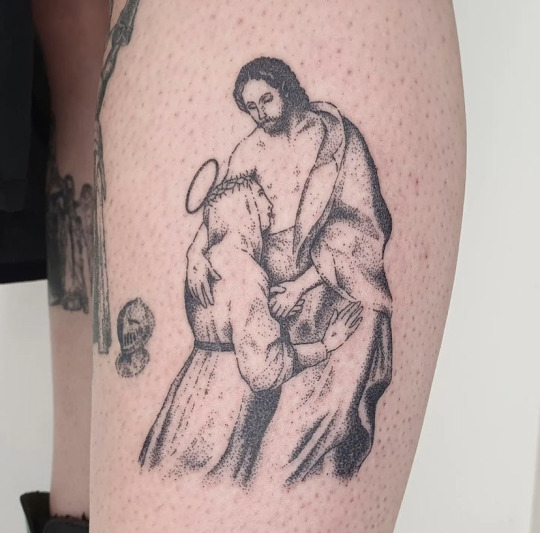
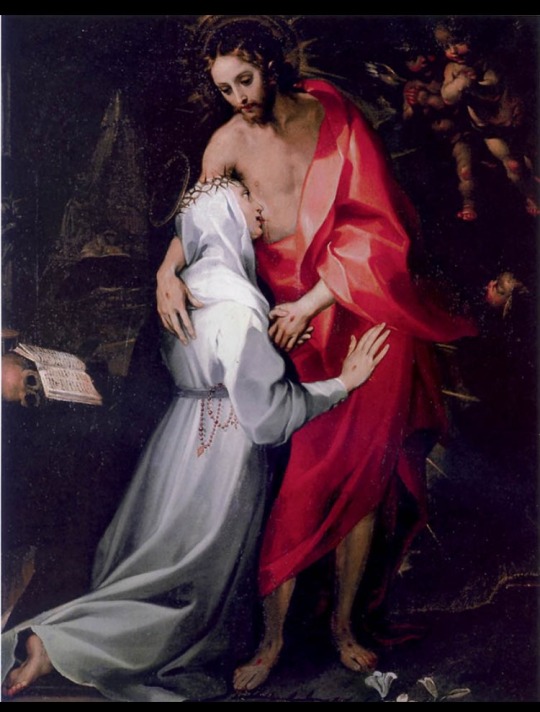
wrote a dissertation on this painting of catherine of siena so i got it tattooed
1K notes
·
View notes
Text

Florentine Master
St. Catherine of Siena between St. Sebastian and a soldier saint (St. Demetrios?)
Oil on wood, 29.5 × 47.5 cm, first half of the 16th century
84 notes
·
View notes
Text
People of our own time may consider the story of Catherine and Andrea more horrible than edifying, and feel that her ecstatic contemplation of the blood of Christ--a motive which recurs continually in her visions and her letters and her teaching--discloses an unhealthy love for the least attractive feature of Christianity. In our own lifetime we have learned to know the smell of rotting corpses on battlefields and in bombed towns; we know of the stinking sores and boils of prisoners from concentration camps, where dead and dying were made to lie on beds as wretched as the one Catherine had chosen for herself. We have poured out oceans of blood and tears, both of the guilty and the guiltless, while we hoped against hope that this blood and these tears could help to save a world reeling under the weight of its miseries. And how little have we achieved of the great things we dreamed! Yet we ascribe it to the confused ideas of the time she lived in and her own dark vision of Christianity, when Catherine intoxicated herself with the blood of Christ--the blood which would put an end to human bloodshed, if only we could agree to receive it as the redemption from our bloodthirsty passions, our insatiable lust for imagined gain for ourselves projected onto other nations or classes. Indeed, many Catholics think in this way. The strong-willed, brave and strangely optimistic girl who handled the powerful men of her time so masterfully, who had such an unusual understanding of the characters of the men and women among whom she lived, who really succeeded in making peace between many of her unruly townsmen, who in fact on one or two occasions prevented war, and on many put an end to bloody feuds--she would answer us as she answered her contemporaries in her letters and conversations and in the Dialogue: that the blood of Christ was the only source of her own courage and strength and wisdom, of her amazing and indomitable joy of living. She would say to us, Drink of it with the lips of your souls, as the saints in their visions seemed to drink it with their lips of flesh; assuage your thirst in the love which streams from God's holy Heart--then there will be an end to the vain shedding of man's blood by the hand of man. In her visions Catherine saw God's fire fall from heaven, like a rain of blazing light and burning warmth: can we really understand anything of her experience, we who have seen the fire of hate falling from the clouds, who fear in our hearts for the day when an even more destructive fire, invented by an even more bitter hatred and more violent passions, shall rain down over us and our children? For us, Catherine would have only the same message which she brought to her contemporaries, she would know only of the same remedy for our misery--the blood of Christ, the fire of God's love, which burns up self-love and self-will, and lets the soul appear, beautiful and full of grace, as it was meant to be when God created us.
Catherine of Siena, by Sigrid Undset (1951)
29 notes
·
View notes
Text
If I could remain united with You in love while, at the same time, placing myself before the entrance to hell and blocking it off in such a way that no one could enter again, then that would be the greatest of joy for me, for all those whom I love would then be saved.
a prayer of Catherine of Siena, as recorded by the Blessed Raymond of Capua in his Life of the saint, trans. David Kipp.

Christ Breaking Down the Gates of Hell, by a follower of Hieronymus Bosch
#Christianity#Catholicism#salvation#redemption#hell#damnation#Jesus Christ#Catherine of Siena#prayers#love#charity
22 notes
·
View notes
Text
rosary novena day 29 : sorrowful mysteries
meditation for tonight was on the reciprocal nature of the Passion. Jesus enters into our suffering, and invites us into His, thus effectively re-presenting our own suffering back to us in sanctified form.
It occurred to me at the monastery that mortification as a practice is not about punishing yourself or causing yourself pain because ""that's what you deserve"" in some nebulous sense, or in order to dissociate from the flesh in some hideously gnostic sense, but has to be done with love. An analogy would be a parent shaving their head for their child undergoing chemotherapy, or abstaining from cake because your partner's on a diet, or a pregnant woman delaying treatment for cancer until she can deliver the child safely. Mary practices mortification during the Passion by staying with her Son despite the incredible distress it must have caused her to watch Him be tortured, when Peter and the other disciples couldn't bear it and turned away.
This highlights the fundamental issue with penal substitution and other christologies that present the Passion as punishment rather than love. If Jesus is doing nothing but taking punishment on Himself, the only thing we gain by meditating on it is guilt for what we deserve, and a habit of suffering for its own sake. The Passion is Jesus taking our suffering onto Himself, not because we are so damnable and rotten that we all deserve to be tortured to death, but because we were already suffering, and when you truly love someone, you can't bear to see them suffer alone. Like Mary can't bear to leave Jesus in His suffering, Jesus does not leave us in ours, but enters it, participates in it, and says to us: my love is greater than your pain. In turn, we are invited to love Him more than we fear our own pain.
Catherine of Siena says, it was not nails that held our Lord to the Cross, but His love. The Passion is Christ's great act of mortification for love of us. Compassion, is co-suffering; suffering with.
Simon of Cyrene, and the carrying of the cross illustrates the principle. We are meant to bear our sufferings with Jesus, mutually taking up each other's crosses. Not avoiding suffering altogether, but suffering with and for the one you love.
In a way, I think you could say that Jesus' entire earthly life was His Passion. God suffered the whole mortifying ordeal of being human for love of you. Fulton Sheen has a good sermon on this called Kenosis, in which he explains that God condescending to become human is somewhat comparable to a human condescending to become a dog whilst maintaining a fully human understanding of maths, philosophy, and your capabilities as a human. Suddenly you have to sit and heel and eat out of a bowl on the floor and shit in the garden and all the while knowing the etiquette for meals with several sets of cutlery and what it was like to operate in the world as an adult human person with a job and a bank account and the capacity to talk about the Nicomachean Ethics. And the difference between a human and a dog is infinitely smaller than the great chasmic void between us and God. The only explanation for it is God's incredible love for us, that He would suffer all the little indignities of the human life cycle, culminating in every possible humiliation and agony, just to help us to carry the burden of it all as we go through our little existences.
#rosary novena meditations#rosary#catholic#jesus#Catherine of siena#this ended up rather longer than I was expecting#penal substition#is a heresy#hope that helps#mortification#literally who even reads half these tags#imagine going on Tumblr dot com and being like#ah yes#I will browse the mortification tag#st Catherine if she had a Tumblr probably
7 notes
·
View notes
Text
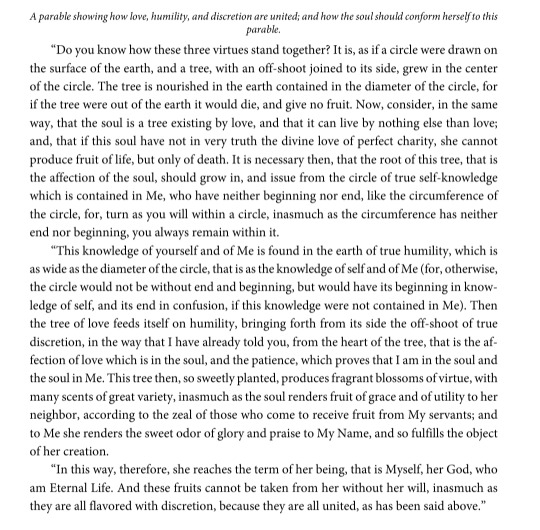
Catherine of Siena, trans. Algar Thorold
#not enough said about the arboreal dimensions of god. <- sentences that jrr tolkien would understand#me#catherine of siena
38 notes
·
View notes
Photo

Christus am Kreuz mit der Heiligen Maria, Johannes dem Evangelisten und Katharina von Siena, um 1570 von Marco Pino (oil on panel)
#kunst#kunstwerk#art#artwork#marco pino#künstler#artist#religion#religiöse kunst#religious art#jesus christ#jesus#christ#christus#kreuz#cross#death#tod#heilige maria#saint mary#johannes#john the evangelist#katharina von siena#catherine of siena#trauer#grief#bibel#bible#holy#heilig
11 notes
·
View notes
Photo
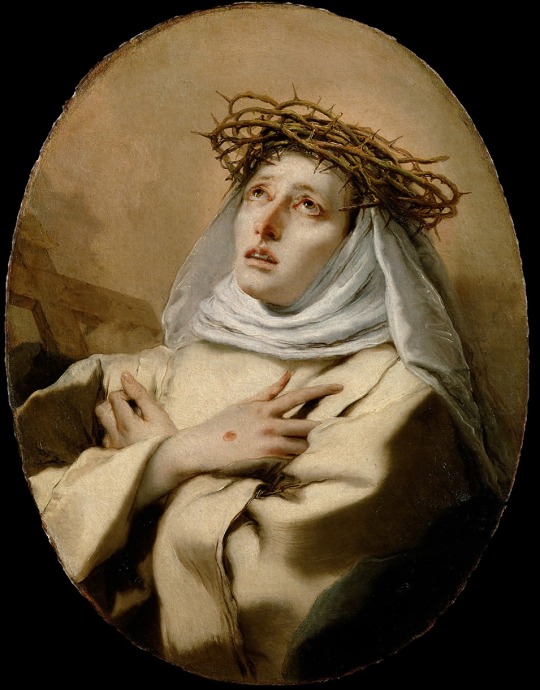
St. Catherine of Siena (1746) - Giovanni Battista Tiepolo
209 notes
·
View notes
Text
happy feast day of st catherine of siena they simply dont make catholic women today like they used to
9 notes
·
View notes
Text
Just learned that Rita of Cascia was born one year after Catherine of Siena died. Bitches so bad that the earth couldn’t handle two of them at the same time
#do you think that at the Final Judgement God will understand when I explain#that I was complimenting His beloved saints by calling them “’bad bitches’?#I think st Rita will at least. she understands my sense of humour at this point. even if probably against her will.#Im ALWAYS terrified to put tags on my posts bc. what if the Catholics that Scare Me find it#but let’s try!#Catherine of Siena#Rita of Cascia
15 notes
·
View notes
Text

THE DESCRIPTION OF SAINT CATHERINE OF SIENA
The Patron of Those Against Fire and Miscarriages
Feast Day: April 29
"Eternal God, eternal Trinity, you have made the blood of Christ so precious through his sharing in your divine nature.
You are a mystery as deep as the sea;
the more I search, the more I find, and the more I find the more I search for you.
But I can never be satisfied; what I receive will ever leave me desiring more.
When you fill my soul I have an even greater hunger, and I grow more famished for your light.
I desire above all to see you, the true light, as you really are."
-excerpt from 'The Dialogue of Divine Providence'
One of the few women to be declared Doctor of the Church, Catherine, was born Caterina di Jacopo di Benincasa, on the Feast of the Annunciation of Mary - March 25, 1347, in Siena, shortly before the Black Death ravaged Europe. Her parents were Lapa Piagenti, the daughter of a local poet, and Jacopo di Benincasa, a cloth dyer who ran his enterprise with the help of his sons.
At the age of six, after experiencing a vision of our Lord, Catherine consecrated her life to God. When she reached the age of 12, to convince her parents that she would never marry, she cut off her beautiful hair.
Catherine entered the Third Order of St. Dominic in 1365, and led a life of penance and prayer in her house. She was often subjected to trials and desolation.
One day, Catherine exclaimed: 'Oh Lord, where were you when my heart was so sorely troubled with temptations?'
The Lord replied: 'Daughter, I was in your heart, fortifying you by my grace.'
While Siena was celebrating a carnival, Catherine was praying in her room when our Lord appeared to her, accompanied by the Blessed Virgin Mary and a crowd of the heavenly host. Taking the girl's hand, the Blessed Virgin held it up to her Son, who placed a ring on it and espoused Catherine to himself. Although she cared for the sick and the prisoners, she was unjustly accused of being a fanatic and a hypocrite.
In 1375, as she was praying in the church of St. Cristina in Pisa, she received the stigmata from our Lord according to Raymond of Capua's biography. Because of her holiness, she was constantly called upon to arbitrate feuds and misunderstandings.
In June 1376, Catherine went to Avignon in France, to urge Pope Gregory XI to return to Rome, whence the pope has been absent for 74 years.
She spent the rest of her days composing 'The Dialogue of Divine Providence', a book which she wrote under the inspiration of the Holy Spirit. Besides, Catherine wrote about 400 letters of great interest, all of them remarkable for beauty and spirituality.
Showing a remarkable combination of respect, frankness and familiarity, she called the Pope, 'my sweet daddy,' while reminding him of his obligations as the leader of the Universal Church.
After offering herself as the victim for the Church, Catherine died peacefully in the Lord at the age of 33 on April 29, 1380, having eight days earlier suffered a massive stroke which paralyzed her from the waist down. Her last words were: 'Father, into Your Hands I commend my soul and my spirit.'
Catherine beatified on Christmas Eve 1460 and canonized by Pope Pius II in 1461, Pope Paul VI named Catherine a Doctor of the Church on October 4, 1970; this title was almost simultaneously given to Teresa of Avila, making them the first women to receive this honor.
#random stuff#catholic#catholic saints#dominicans#order of preachers#dominican tertiary#catherine of siena#catalina de siena#miscarriages#against fire#doctor of the church
4 notes
·
View notes
Text
I have made the choice of suffering as the well-spring of my strength. It is no hardship for me, but rather a delight, to endure for my Savior’s name all you have been inflicting on me, and more besides, for as long as it shall please his Majesty.
St. Catherine of Siena, Setting the World on Fire by Shelley Emling
2 notes
·
View notes
Text

st catherine of siena
13 notes
·
View notes
Text


this is me, if you even care
#this is me btw#tw ana bløg#tw ana rant#tw ed but not sheeran#anatmblr#anorexia mirabilis#catherine of siena
3 notes
·
View notes
Text
Happy to confirm that not only is the "We've had enough exhortations to be silent" quote from Catherine of Siena is real, but that it goes even harder in the original Italian.
Oimé, non più tacere! Gridate con centomiglia di lingue. Veggo che, per lo tacere, el mondo è guasto, la Sposa di Cristo è impalidita
(The bolded and italicized phrase is left out of most English translations of the quotation I see; not only is the world rotten from silence, but the Spouse of Christ is impaled by it)
17 notes
·
View notes